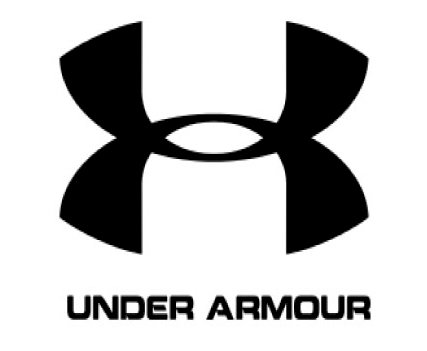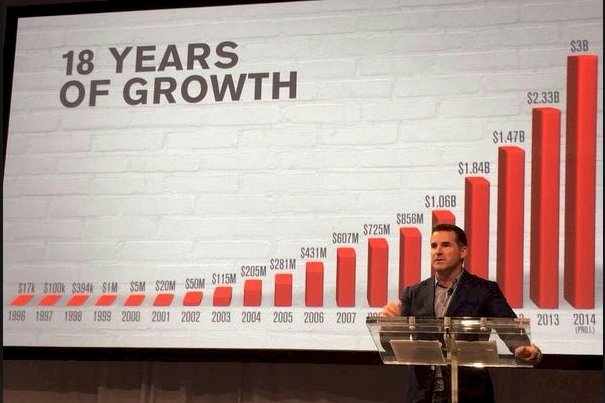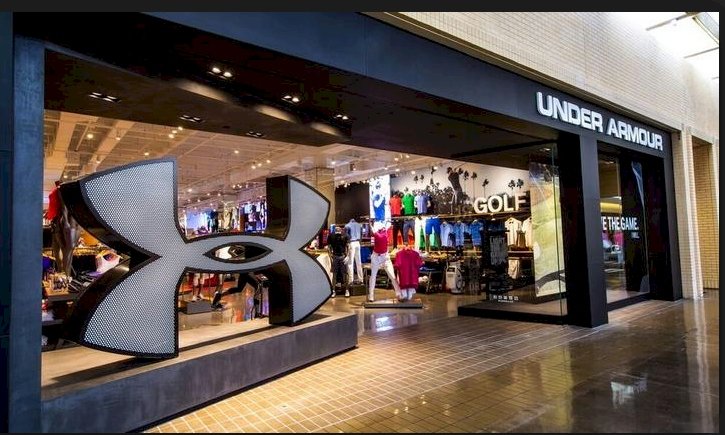This is the History of Under Armour and a look at their Logo Design.
Athletes and outdoorsmen everywhere rely on Under Armour to outfit them with superb quality clothing and apparel. Since 1996, the Under Armour Logo and brand has been producing a wide variety of sports clothing, quickly becoming a company able to rival the likes of giants such as Nike and Adidas. Through great branding and even better products, Under Armour has risen to the top of the sports apparel industry. In this article, we’ll look at the history of the brand, as well as the significant role, Under Armour’s logo has played in their success.
History of Under Armour
Kevin Plank founded Under Armour in 1996. At the time, he was a 23-year-old special teams captain of the University of Maryland football team. Plank got the idea for the Under Armour brand after noticing how much dryer his compression shorts stayed than the shirts he wore while playing football. Plank set out to design a shirt made of synthetic fabric that would wick away moisture and began selling the apparel out of the trunk of his car and his grandmother’s basement. At the end of 1996, Plank made his first large sale, selling apparel to a team for $17,000. Even the name of the company itself is a testament to Kevin Plank’s rags-to-riches success; he only chose the British spelling of the word “Armor” because of the toll-free vanity number for that name was still available.
Today, however, Under Armour could certainly afford the buy out any number they choose. The brand netted $232.6 million in 2015 and has been the go-to apparel for some of the biggest sports stars in the world today. Soon after the company’s inception, even the likes of Nike, Adidas, and Reebok began following Under Armour’s lead, releasing their own versions of moisture-wicking shirts.
While the Under Armour brand was built on this moisture-wicking design, today, Under Armour offers a wide variety of clothing and apparel, from cold-weather gear designed to keep outdoorsmen warm in the harshest climates, to normal, everyday t-shirts and jackets. Of course, staying true to their roots, the brand continues to offer gear to athletes as well, constantly pushing the line to make their shirts, pants, cleats, and other gear lighter, stronger, and more comfortable to wear.
Whether it’s for the casual sports fan or the NFL athlete, one thing all of Under Armour’s gear has in common is their recognizable logo.
Need A Fast, Affordable Fitness Logo?
Use our Fitness Logo Maker and make your own logo in just 5 minutes.
The Under Armour Logo
 The Under Armour logo was born from the Under Armour name, which was essentially formed by accident. Back when the company was first starting, Kevin Plank mentioned the idea of calling it “Body Armor”. His brother, Bill, misheard him and thought he said:“under armor”. The name stuck, of course, with the British spelling being used in order to get the phone number Plank wanted. The logo was designed soon thereafter, combining the “U” in “Under” with the “A” in “Armour” to form a very simplistic logo that is now recognizable around the world.
The Under Armour logo was born from the Under Armour name, which was essentially formed by accident. Back when the company was first starting, Kevin Plank mentioned the idea of calling it “Body Armor”. His brother, Bill, misheard him and thought he said:“under armor”. The name stuck, of course, with the British spelling being used in order to get the phone number Plank wanted. The logo was designed soon thereafter, combining the “U” in “Under” with the “A” in “Armour” to form a very simplistic logo that is now recognizable around the world.
Design Elements of the Under Armour Logo
The Under Armour logo is a very simplistic design, combing two “U’s” one of which is upside down that form an “A” in all black text with the words “Under Armour” spelled out beneath it. Combined together though, the two elements of the logo form a really crisp, unique looking crisscross that is immediately recognizable and aesthetically appealing enough to be the central design on all of Under Armour’s clothing.
The Under Armour logo also features a custom typeface that was designed specifically for the company. It’s an interesting typeface that combines both smooth edges and sharp points, conveying the message that Under Armour’s clothing is both comfortable to wear while also being tough and aggressive.
The popularity of the Under Armour Logo
Under Armour actually owes the entire foundation of their initial success to the reorganizability of their logo. Back in the company’s first year, before Under Armour had landed any major contracts, the Oakland Raiders quarterback Jeff George appeared on the cover of USA Today wearing an Under Armour turtleneck. Shortly after that major boost in media attention, teams across the country took notice. Kevin Plank was soon filling orders for teams such as the Georgia Tech Yellow Jackets, the Arizona State Sun Devils, the NC State Wolfpack, and a number of other DI football teams, all because of the brand’s logo getting noticed.
The popularity of the Under Armour logo is still one of the driving forces behind their clothing sales. Of course, much of the company’s marketing is based on the functionality of their clothing and apparel, however, in the clothing industry, fashion and aesthetic appeal are always one of the most critical factors. In almost every one of Under Armour’s clothing designs, their logo is the key design feature.
Under Armour has attached meaning to their logo. Much like the Rolex crown is a symbol of wealth and luxury, the Under Armour logo is a symbol of speed, strength, and athleticism. People are proud to wear clothing that displays the Under Armour logo because they see it as a message about their own lifestyle and interests. By attaching such a positive connotation to their logo, Under Armour is able to produce clothing and apparel that flies off the shelf even if the logo is the only design feature that sets the clothing apart from its competitors.
In this way, Under Armour is genuinely one of the biggest success stories of the impact a good logo can have. Of course, in order to achieve success like Under Armour’s, you have a great logo combined with even better marketing. Without the marketing, Under Armour put in to give their logo such a desirable connotation, people’s associations with the Under Armour logo’s design might not be quite as beneficial to the brand’s bottom line as it is today. As it stands though, the Under Armour logo has helped put the brand on the map in more ways than one and is one of our favorite case studies on the difference a great logo can make.









